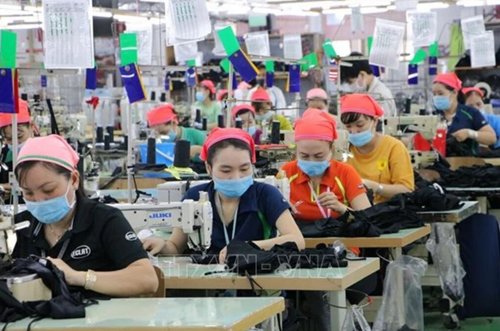According to Chairman of the Vietnam Textile and Apparel Association (VITAS) Vu Duc Giang, many Vietnamese enterprises are already weaving eco-friendly materials like organic cotton, recycled polyester, and Tencel. This aligns with global trend as major global brands operating in Vietnam have committed to achieving net-zero carbon emissions by 2050 under the Fashion Industry Charter for Climate Action.
    |
 |
|
A garment factory in Dong Nai province |
Beyond sustainability, the sector is harnessing advanced technology in design and production. Investors are working to optimize production capacity, streamline supply chains, and improve product quality to stay competitive in both domestic and global markets.
Between now and 2030, the focus will gradually shift from rapid growth to a sustainability-driven, circular business model. By 2031-2035, the goal is to fully integrate Vietnam into a circular economy, strengthen its domestic value chain, and secure a high-value position in the global supply chain.
To such end, Vietnam is investing in sci-tech, upskilling the workforce, and developing hi-tech textile and dyeing projects in industrial zones. Plans also include expanding the production of natural, eco-friendly materials, accelerating digital transformation, and building a robust fashion ecosystem with globally and regionally recognized brands.
With over 7,000 apparel companies employing more than three million workers, Vietnam’s garment-textile industry is a true powerhouse. Up to 80% of its production capacity is dedicated to exports, while the remainder serves domestic consumption. Last year alone, Vietnam’s apparel exports reached nearly 44 billion USD, up 11.26% annually. This achievement solidifies Vietnam’s position as the world’s second largest garment-textile exporter, behind only China.
Supported by 17 next-generation free trade agreements (FTAs) already in effect, the industry is poised for further growth, targeting 48 billion USD in export revenue this year.
Source: VNA